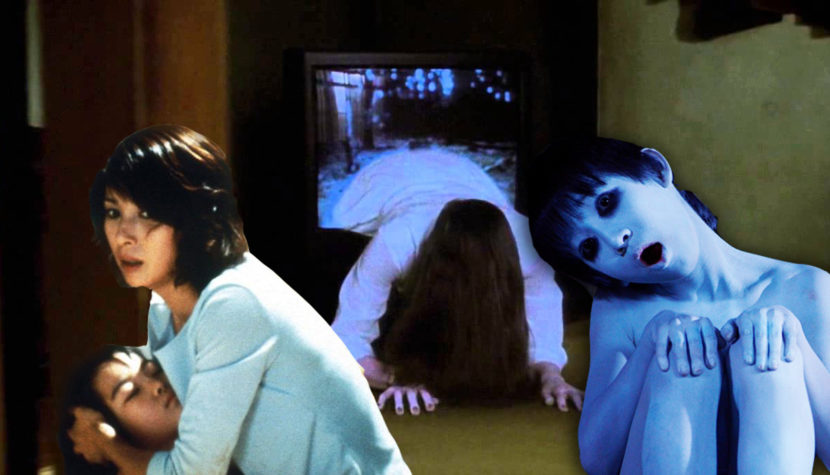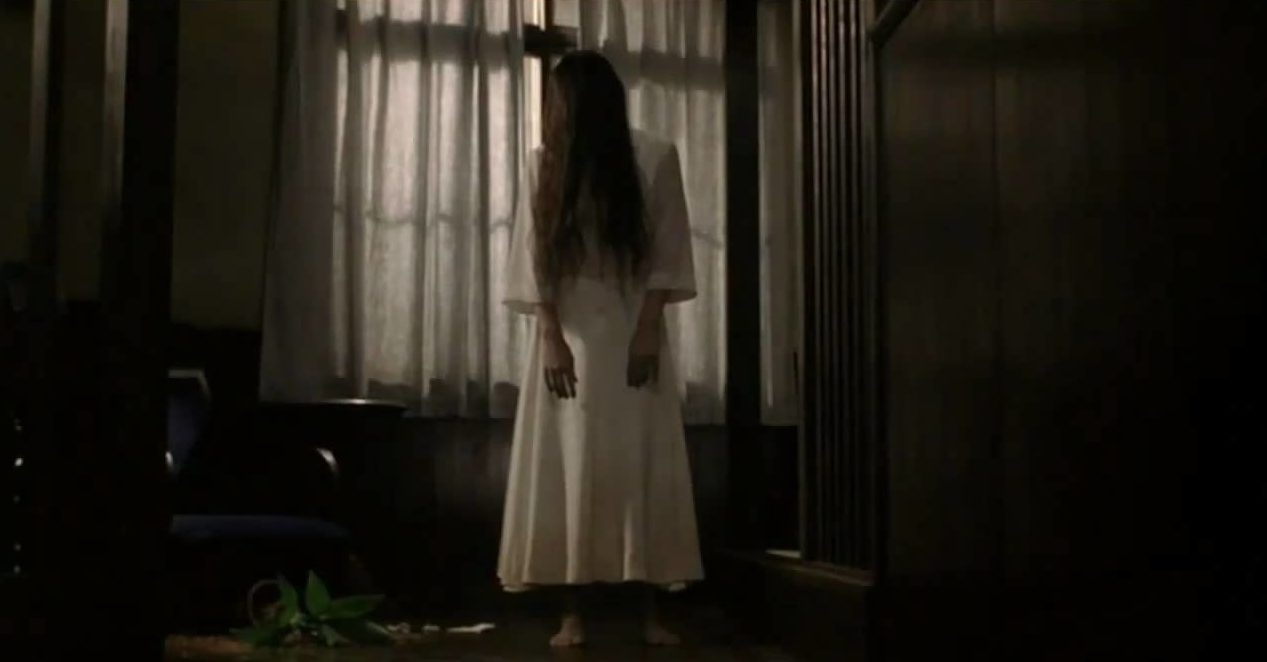Guide to JAPANESE HORROR. Vengeful demons with pale faces

The author of the production was Hideo Nakata, a graduate of journalism studies in Tokyo, then a little-known director. The film was about a mysterious videotape, after watching which the viewer’s phone rang and the voice in the receiver informed him that he had only a week to live. Ringu not only became a stunning global commercial success, but above all it is considered the most famous and perfect example of the then new trend of horror cinema, called J-horror. The peculiar phenomenon was given publicity by the American cinema, which since 1998 began to produce remakes of virtually every interesting Japanese bogeyman.

The beginnings

Although it is Nakata who is considered the father of J-horror, it is also worth mentioning the people who in the 90s created the foundations of this phenomenon. One such creator is Norio Tsuruta. He is the author of cheap video productions from the early 1990s, in which the shivers on the recipient’s body were to be aroused primarily by the atmosphere of horror built with simple cinematic means. Tired of dazzling with brutality and gore, characteristic of Asian horror in earlier decades, the Japanese quickly liked Tsuruta’s Scary True Stories (1991–1992), where, apart from the atmosphere, fear was also caused by the ghosts of pale women with long, straight and black hair. These were characters well known in Japanese culture, but for some time they had been completely forgotten. In the tradition of this country, they have probably always been a symbol of resentment towards the living, against whom they had to take revenge for various reasons. Apart from Tsuruta and Nakata, who at that time were only making their first steps in film directing, the name of Takashi Shimizu should also be mentioned. The future creator of Ju-on (2002) made himself known already at that time as the author of terrifying short films, in which he introduced for the first time the character of a characteristic ghost of a boy.

From the above description of the beginnings of J-horror, it is easy to conclude that it is impossible to talk about the trend we are interested in without mentioning the ghosts that were created or “revived” according to traditional accounts for the needs of the films. They are, after all, the main component of this extremely peculiar subspecies. Knowledge about them allows you to better understand J-horror, which can sometimes turn out to be too “exotic” for us Europeans, and therefore hard to digest.
J-horror and demons from the past
Let’s start with the fact that in virtually every major production of the J-horror genre we will meet the so-called yūrei, i.e. demons who suffered harm at the hands of loved ones during their lifetime, and after death gained enormous strength to return to the world of the living and take revenge on their torturers. Their actions are motivated by Shinto-Buddhist beliefs and customs. Their appearance is also not accidental, because it is in line with the convention of amazing Japanese stories about ghosts and other supernatural phenomena – 17th-century kaidan. It is also based on one of the three traditional theaters of the Land of the Rising Sun – kabuki, where demons were depicted as figures with pale faces and long, black, loose hair, dressed in white mourning kimonos.

J-horror and modernity
Cultivating tradition, however, is mixed in J-horror with modern visions, thanks to which old demons skillfully scare even today. This is actually the most important feature and the core of the discussed phenomenon. Modern yūrei is a veritable onryō, and therefore the most effective, aggressive and dangerous of the demons of the Japanese tradition. Not only do they no longer satisfy the desire for revenge, focusing only on the person who hurt them in life, but they extend their destructive activity – by the way – to everyone who comes around. The most popular yūrei of the Japanese horror genre from the turn of the 20th and 21st centuries include: Kayako Saeki (Ju-on), Mimiko (Missed Call) and Sadako Yamamura (Ringu).

The coexistence of tradition and modernity in J-horror, however, is most evident in the empowerment of demons with the power to use technology destructively. Due to the fact that there were a lot of such intelligent onryōs in the described trend, the J-horror films in which they were scary were given the name: “techno-horror”. The most important representatives of the subgenre are The Ring (1998), Pulse (2001) and Missed Call (2003). However, it’s not just about arming the ghosts with another deadly weapon, but about creating a vision of the world in which technology turns away from man. Techno-horror is therefore as terrifying as it is sad, because it deals with the disappearance of human relationships and loneliness. On a deeper level, it depicts fears about losing control of technology.
Time and place of action

The most noticeable manifestation of the coexistence of tradition and modernity in J-horror is the setting of the story “here and now”. Yūrei scare in public places or apartment buildings in huge cities, and not, as it was so far, in samurai mansions known from history. Thus, the metropolis becomes one of the heroes of the images of this trend of horror cinema from the turn of the century. Thanks to this location of the story, the creators can, for example, be inspired by the so-called urban legends.
Due to the fact that the largest group of recipients of the J-horror subgenre were students of Japanese high schools, it was young people who were most often made victims of demons. Outside of school, haunted modern houses and apartments turned out to be the perfect place to tell J-horror stories. The attacks of the onryō taking revenge in these places also became the occasion for a dissertation about the condition of the family or school, taking into account the most important problems that they face.
In silence and without a happy ending

After revealing the main elements of J-horror, it is worth taking a look at how much it differs from the American horror cinema to which we have become so accustomed. One of the most important differences is the pace of events. Contemporary American horror movies are rushing by without restraint and are additionally filled with a terrifying number of action scenes. Meanwhile, representatives of J-horror seem not to be interested at all in showiness and blood. The most important thing is to create a mood and an environment in which traditional spirits could function. According to the Japanese, demons coexist with people, which means that they are not only enemies of the living. This, in turn, explains why the films of the discussed trend do not usually end with the extermination of the apparition, as is the case in American and European horror cinema. Another characteristic aspect of Western horror is the burning need to explain and rationalize supernatural events. Representative examples of J-horror in opposition to American horror cinema, instead of answering and explaining, pose even more questions. The oneiric atmosphere felt while watching productions from the discussed trend allows for greater originality and courage in building the world.
Although the best years of J-horror are over, the world cinema still likes to refer to its characteristic features that make horror movies unique, more interesting and, above all, even scarier.

